The early life of Princess Elizabeth: from birth to accession as Elizabeth II
Author of Princess: The Early Life of Queen Elizabeth II, Jane Dismore looks at the formative years of the princess who would become the Britain’s longest-reigning monarch.
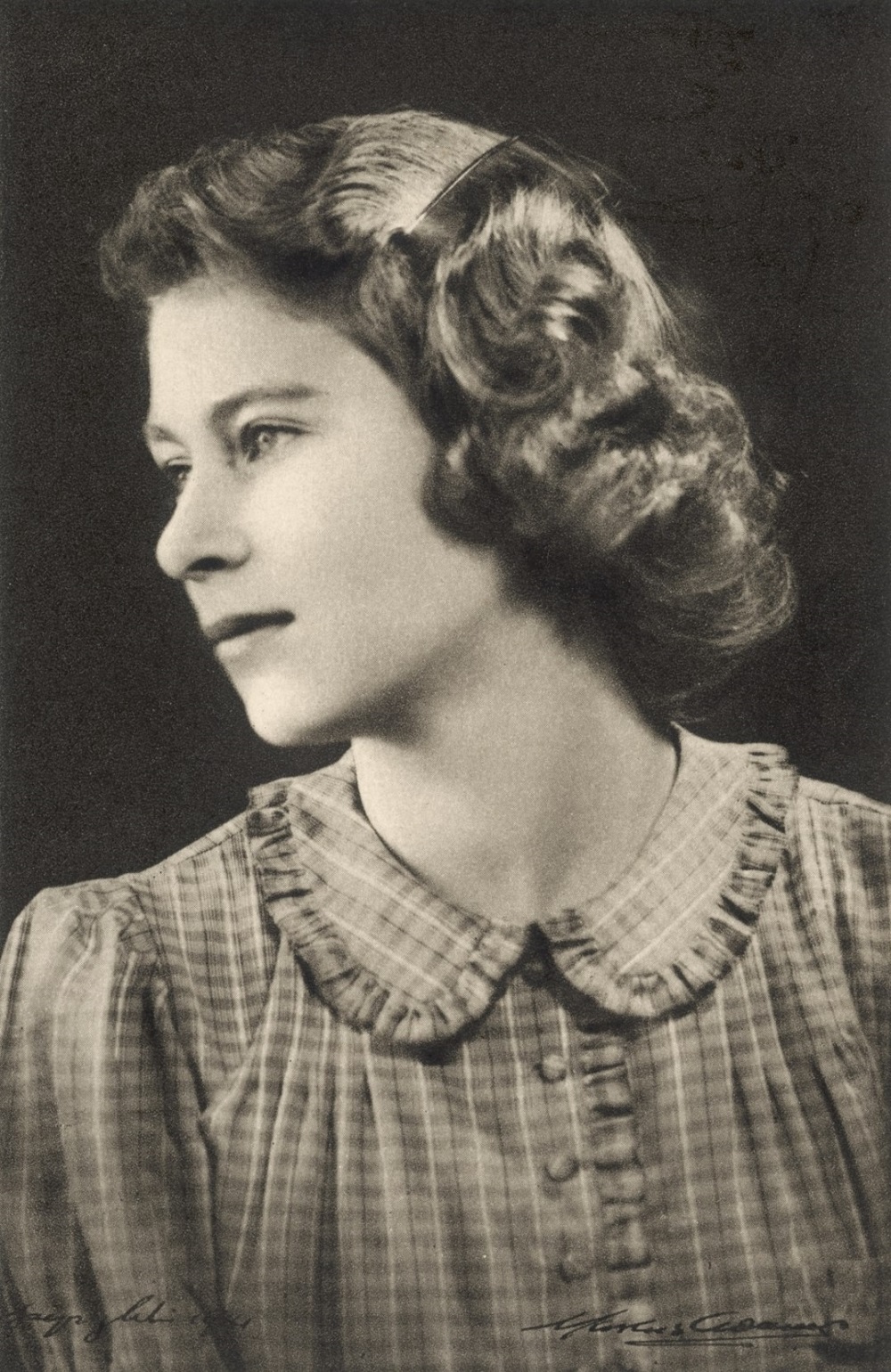
On 8 February 1952, at St James’s Palace, London, the 25-year-old woman who would become the Britain’s longest-reigning monarch made her accession declaration to her Privy Council. The Archbishop of Canterbury and her prime minister, Winston Churchill, were among those present who heard her address them clearly and firmly: ‘By the sudden death of my dear father, I am called to assume the duties and responsibility of sovereignty.’ She promised ‘to uphold constitutional government and to advance the happiness and prosperity of my peoples spread as they are all the world over’ (Gazette issue 39467). The declaration was followed by the public proclamations of her accession all over Britain and in many parts of the Commonwealth.
The reign of Elizabeth II had begun two days earlier when George VI died in his sleep at Sandringham, aged 56 (Gazette issue 39458). The princess was in Kenya when the news reached her, at the beginning of a Commonwealth tour with the Duke of Edinburgh. She was the same age as Elizabeth I had been when she took the throne but, unlike the Virgin Queen, she was enjoying her fifth year of married life and had two young children.
At her birth, Princess Elizabeth was third in line to the throne, yet the prospect of becoming queen was remote. Her father’s elder brother Edward, Prince of Wales (known to his family as David), was expected to marry and produce an heir. But when he became Edward VIII in January 1936, aged 41, he was still a bachelor. His abdication in December that year (Gazette issue 34349) to marry Wallis Simpson, an American divorcée, changed the life not only of his brother Albert (‘Bertie’), but also of his ten-year-old niece. Even so, no-one imagined that Princess Elizabeth would accede to the throne so young.
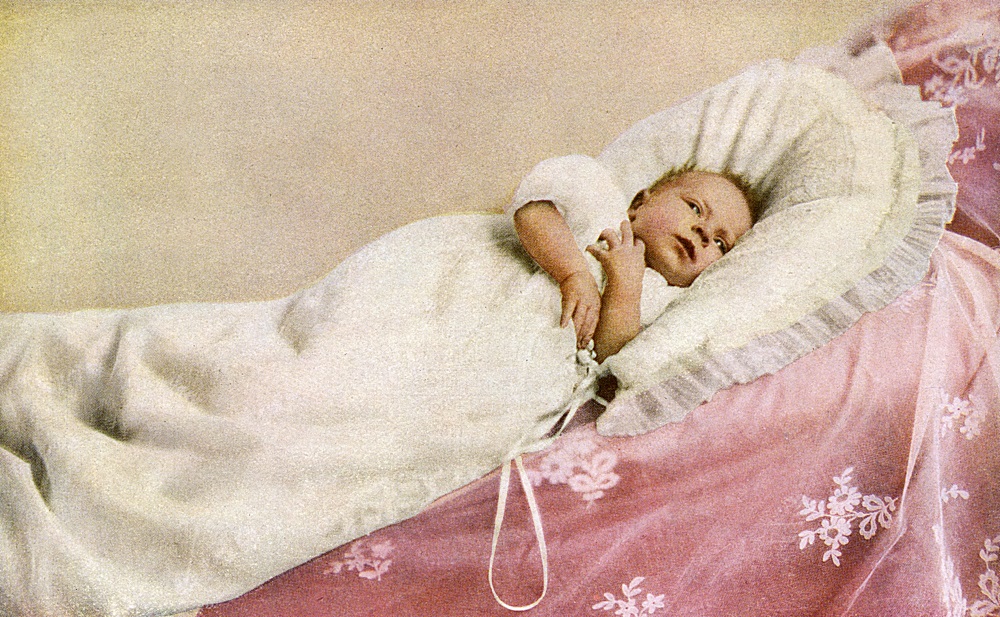
The birth of Princess Elizabeth
Princess Elizabeth Alexandra Mary of York was born on 21 April 1926 at 17, Bruton Street (Gazette issue 33153), the London home of her maternal grandparents, the Earl and Countess of Strathmore and Kinghorne. Her mother, Lady Elizabeth Bowes Lyon, had married Prince Albert, Duke of York, the second son of George V and Queen Mary, in April 1923 after accepting his proposal at the Strathmores’ country home in Hertfordshire. The earl was one of the princess’s godfathers, and it was with him and the countess that she spent some of her earliest days. In January 1927, in the arms of her nurse Clara Knight (known as Alah), the eight-month-old princess waved goodbye to her parents as they left Bruton Street to embark on their six-month tour of Australia and New Zealand. After staying with her royal grandparents, she joined the Strathmores again before her parents’ return. Time spent with her grandmother’s dogs and ponies instilled in her a love of animals, while her sojourns at the Strathmores’ ancient Scottish seat, Glamis Castle, provided a magical setting for her childhood.
When the Duke and Duchess of York returned to Britain in June 1927, the family moved into their first permanent home in London, at 145 Piccadilly. A five-storey house with a balcony, its rooms included a ballroom, a library and 25 bedrooms, reached by a lift. Leading off the circular landing on the top floor was the nursery suite and Alah’s rooms. The princess also had a nursery maid, Margaret Macdonald, known as Bobo, who later became her dresser. Behind the house was a garden where the princess would learn to ride her tricycle, and beyond were Hamilton Gardens and Hyde Park. The duchess established a daily routine with the princess which included games with the duke and bedtime stories, and she taught their daughter to read before a governess was employed. The princess also quickly learned to shake hands and curtsey, particularly before her royal grandparents, who doted on her.
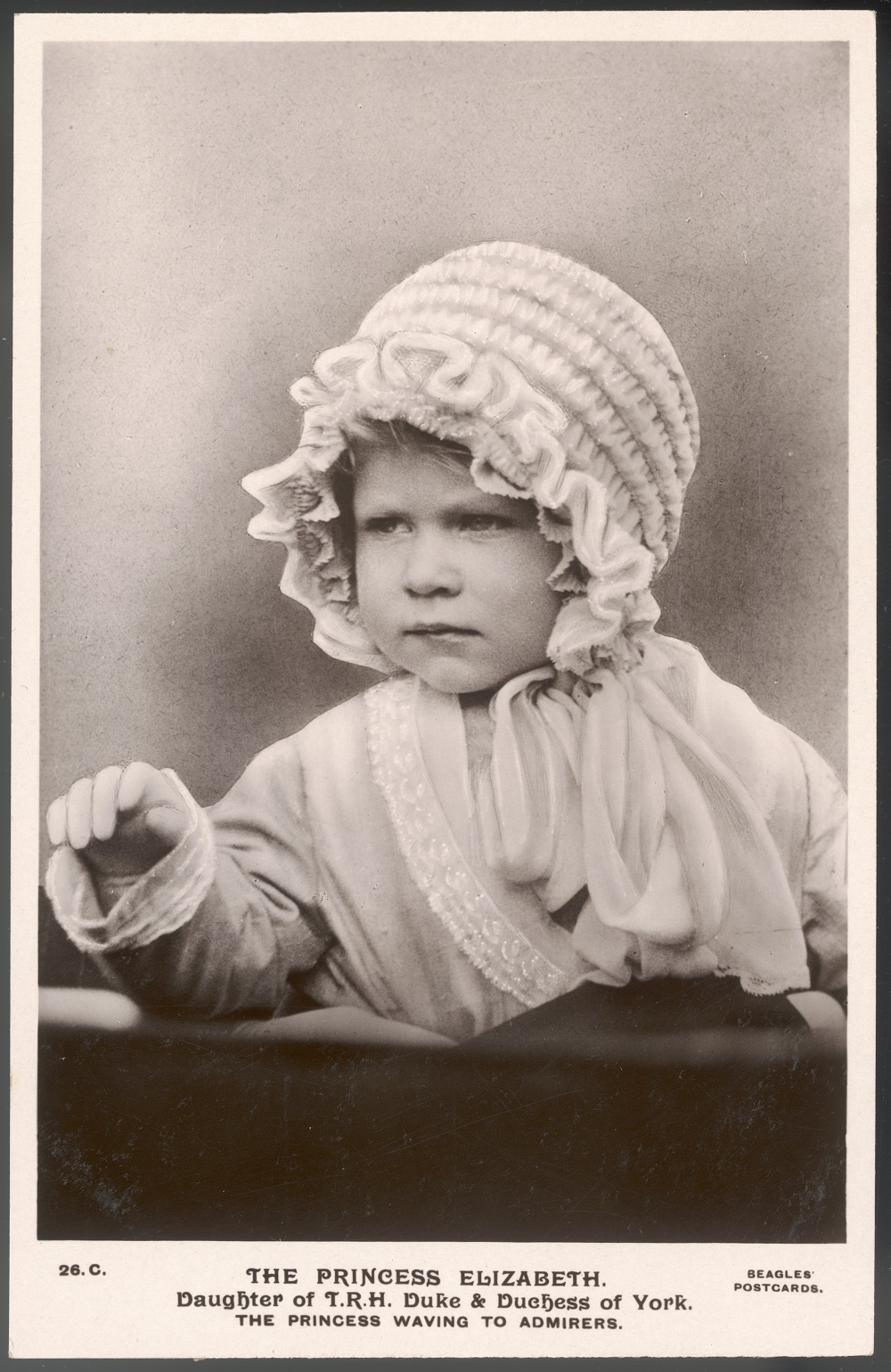
On 6 September 1928, Princess Elizabeth was mentioned for the first time in her own right in the Court Circular, which announced that she had arrived at Balmoral Castle. Winston Churchill MP was a guest and told his wife that the princess had an air of authority and reflectiveness astonishing for an infant. While King George V was convalescing at Bognor in March 1929 after a serious illness, he asked for Lilibet, as the family called her; she was credited with helping the recovery of ‘Grandpa England’. On her fourth birthday he gave the princess her first pony, a Shetland called Peggy, and riding lessons began.
Her sister, Margaret Rose, was born on 21 August 1930 at Glamis Castle (Gazette issue 33636). She was too young to be a playmate yet, but Princess Elizabeth had plenty to occupy her in London. Piano lessons began with Miss Mabel Lander and, when she was five, dancing lessons started under Miss Marguerite Vacani. A governess taught her French and, already becoming a good rider, she attended her first hunt. Swimming lessons started at London’s Bath Club, where her father had learned to swim. For her sixth birthday in 1932, the affection with which she was held in Wales was reflected in the presentation of a life-size house, Y Bwthynn Bach To Gwellt (The Little House with the Straw Roof). It was installed in the garden of Royal Lodge, the Yorks’ country house in Windsor Great Park, where they kept ponies and dogs. The end of that year was memorable for the first royal Christmas broadcast, made by a nervous George V and transmitted live from Sandringham to the Empire at 3.05pm on Christmas Day. As Princess Elizabeth listened, she could not know that her grandfather’s speech marked the birth of a great tradition that one day she would continue.
When Princess Elizabeth reached the age of seven, her first full-time governess, Scottish-born Marion Crawford, known as Crawfie, was appointed to teach her. Her curriculum was influenced by her grandmother, Queen Mary, and was interspersed with educational visits which the Queen herself took the princess on (and later Margaret too). Princess Elizabeth also enjoyed boisterous activities, such as pillow fights and a game called Kick-a-Tin. Summers spent at Birkhall on the Balmoral estate, visits to Glamis and picnics on the moors with her cousins contributed to a happy and stable childhood. The Duke of York referred fondly to his family as ‘Us Four’.
Coronation of George VI and a new role for Elizabeth
But changes were on the horizon. The year Princess Elizabeth turned ten saw the death of George V on 20 January 1936 (Gazette issue 34245). Her Uncle David became Edward VIII and, while she was protected from aspects of his personal life, his keenness to change certain traditions became clear to all. That year, instead of the court moving to Windsor Castle for the Easter period as it always did, the King stayed at his home, Fort Belvedere, and entertained friends. The princesses met Mrs Simpson when he took her over to Royal Lodge that summer. His wish to marry her, and the agonising weeks which led to his decision to abdicate, were traumatic for all, but especially for the Duke of York. On 10 December 1936, Edward VIII signed the abdication papers. ‘Bertie’ was now George VI (Gazette issue 34356). Princess Elizabeth heard her name included for the first time in prayers for the royal family, when she was named heiress presumptive to the throne. Only the birth of a brother could change her fate.
Leaving their home at 145 Piccadilly for the vastness of Buckingham Palace (into which they moved in early 1937) took some adjustment for the royal family, while the physical and emotional effects of their new roles were incalculable. A major event for them all was the Coronation, which took place on 12 May 1937, the date originally fixed for Edward VIII’s (Gazette issue 34453). The King and Queen asked Princess Elizabeth to write an account of the ceremony, which she dutifully did in red pencil in an exercise book, creating a vivid description and a unique legacy.
As the coronation process continued with state balls, banquets and tours, interest in Princess Elizabeth increased. At appropriate times her parents gave her special tasks to carry out. Her exposure to ceremony continued when she attended the King’s first State Opening of Parliament in October, at which he spoke of the friendly relations Britain enjoyed with foreign powers. He was unaware that his brother, now the Duke of Windsor, and his new wife were embarking on a tour of Germany, during which they would meet Hitler.
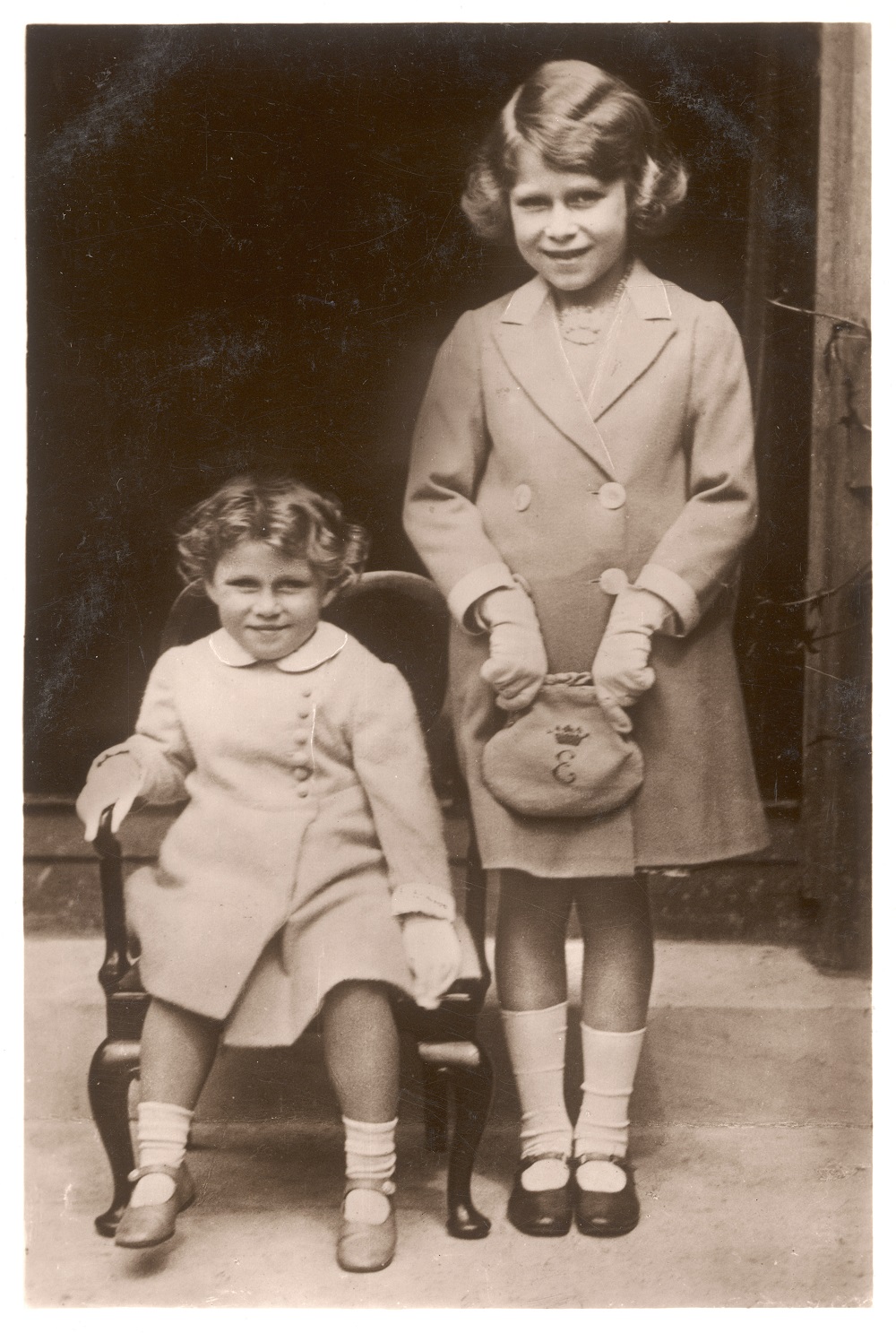
It was the unique misfortune of George VI to be king while his predecessor lived, which contributed to the stress of having been thrust into a role on the world stage for which he had not been prepared. The King was determined that his daughter should not be similarly disadvantaged. He ensured that she was introduced to new responsibilities and eventually to a more challenging educational programme. At Buckingham Palace that autumn a girl guide company was formed (with a Brownie group for Margaret), in which Elizabeth was made second-in-command of Kingfisher Patrol, led by Lord Mountbatten’s daughter, Patricia.
As 1938 began, the political situation in Europe became more fragile when Hitler made himself supreme commander of the Wehrmacht. The King ensured Princess Elizabeth knew what was going on in the wider world and involved her where possible with his official guests. When the American ambassador, Joseph P. Kennedy, and his wife Rose stayed at Windsor Castle, the King seated Elizabeth next to the ambassador at lunch. On the princess’s 12th birthday, the Queen agreed she could become president of the Children’s League of Princess Elizabeth of York Hospital for Children. She saw that her parents always put duty before self. When the Countess of Strathmore died in June, days before their majesties made a state visit to France, the Queen asked only for a brief postponement of their visit.
In September of that same year, the royal family’s holiday at Balmoral was interrupted when Prime Minister Neville Chamberlain arrived with news of the situation in Czechoslovakia. The joy of believing that war had been averted when Chamberlain signed the Munich Agreement with Hitler was to be short-lived.
As Princess Elizabeth approached her 13th birthday in 1939, her education took a different course. To supplement her curriculum, she began lessons twice a week in law and constitutional history with the vice-provost of Eton College, Henry Marten. Cementing foreign bonds became more important than ever. In March their majesties welcomed the French president, M. Lebrun, and his wife on their reciprocal state visit. When the royal family accompanied them to Victoria Station on their departure, the King placed Elizabeth in the first car with him and the president. In May the King and Queen embarked on a tour of Canada and a historic visit to the USA at what was a dangerous time, leaving the princesses at home in Britain.
Life during wartime
If 1939 was an important one for the world, it was of great personal significance to Princess Elizabeth. At the start of their summer holiday in July, on board HMY Victoria and Albert, the royal family visited the Royal Naval College, Dartmouth, where the King had trained. There Elizabeth fell in love with HRH Prince Philip of Greece and Denmark. A handsome 18-year-old naval cadet, he was also a great-great grandson of Queen Victoria. Philip and Elizabeth had met fleetingly in 1934 at the marriage of his cousin, Princess Marina of Greece, to Elizabeth’s uncle Prince George, Duke of Kent, but aged eight, the meeting did not stick in her mind. After Dartmouth, Philip had to remain a memory for a while, for on 3 September 1939, Britain entered the war. Aged 13 when it started, Princess Elizabeth would be 19 when it ended. It was the most formative period of her young life.
Separation from her parents was an experience she shared with millions of children. As the King urgently left Balmoral for London, followed shortly by the Queen, the princesses were taken to Birkhall, a smaller house on the estate. They attended the girl guides, knitted for soldiers and visited evacuees from Glasgow staying in houses that the King had opened up. When the royal family gathered at Sandringham for Christmas, it was the first time the princesses had seen their father for four months.
In February 1940 the princesses returned to Royal Lodge, the location of which was referred to simply as ‘a place in the country’. The King and Queen remained at Buckingham Palace during the week, returning to Royal Lodge at weekends. But the quiet period known as the Phoney War ended. In April, Hitler’s advance through Europe began and by 10 May the Wehrmacht had reached France. Neville Chamberlain resigned and was replaced by Winston Churchill. On 11 May the princesses were moved into the impregnable fortress of Windsor Castle, where they were supposed to stay for a week. They remained there for most of the war.
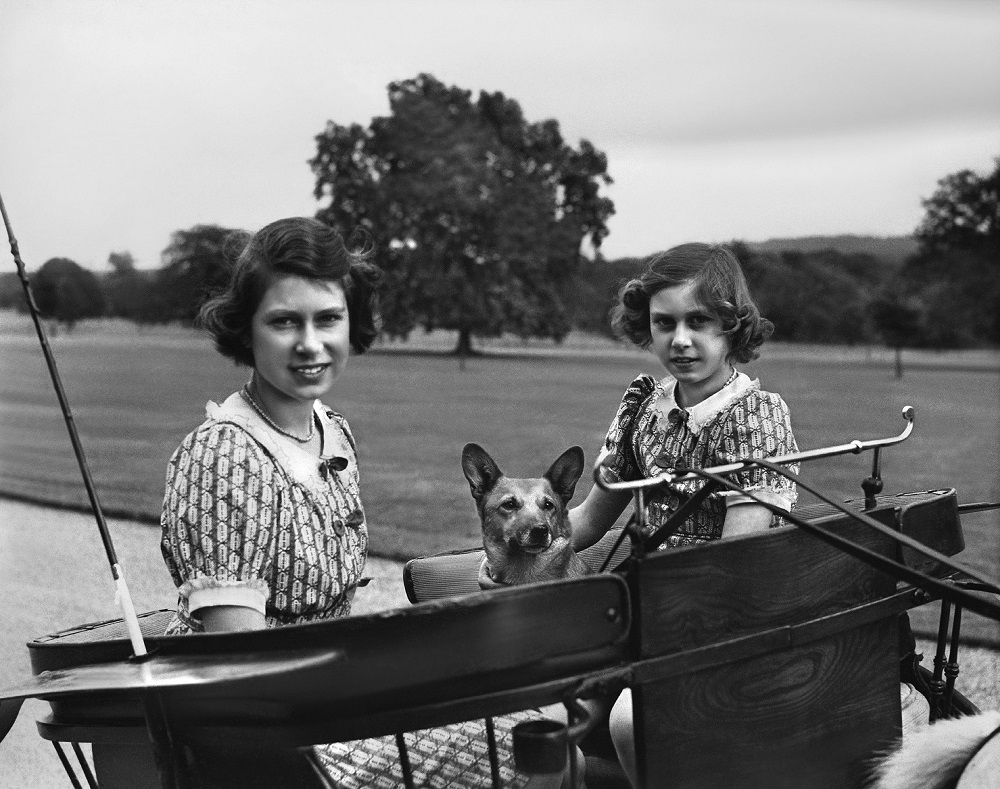
Discomfort, boredom, fear: the princesses experienced all of these. Their parents still stayed at Buckingham Palace during the week where they sheltered European monarchs whom Hitler threatened to capture. Their majesties insisted on saving fuel and observing food rationing, although the household’s meals were supplemented with game and fowl from the royal estates. Soon the princesses’ tuition resumed, and Henry Marten now came to the castle. Singing lessons continued, which the girls loved, and a company of Grenadier Guards who had arrived to protect the family proved to be great fun.
In September 1940 the Luftwaffe increased its bombing raids during the period known as the Blitz. Buckingham Palace received its first hit by a delayed time bomb but fortunately no-one was hurt. On 13 September, however, a German bomber emerged from low cloud, audaciously flew up the Mall and dropped several bombs on the palace. With no time to reach the shelter, their majesties were almost killed, but this fact was concealed from the public. Even though the damage was considerable and the chapel destroyed, they were determined not to leave London. Neither would they send the princesses away, believing that such an act would send the wrong message when morale was important. While Britain’s upper classes sent their children to safety abroad, the princesses stayed in Britain, their war efforts watched and imitated by the public. When Hitler announced on 15 September his intention to march into London, the south-east prepared for invasion. Their majesties responded by increasing their personal security and taking up shooting lessons.
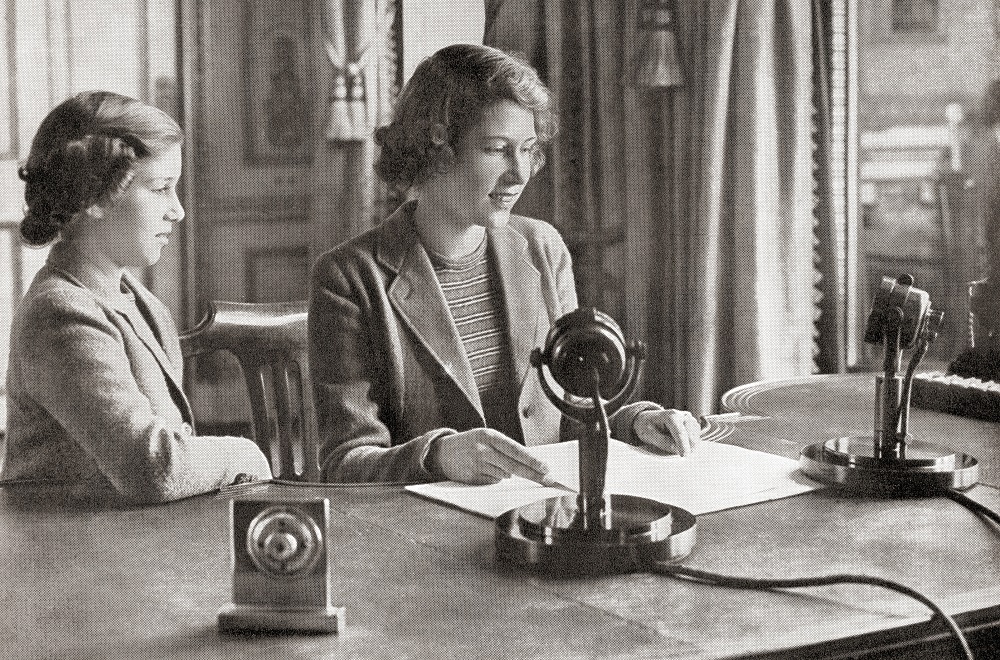 Princess Elizabeth was becoming a symbol of the future, illustrated by what was seen
as her first act of leadership. On 13 October 1940, she delivered her first broadcast
in Children’s Hour, heard all over the Empire and in the USA, in which she empathised
with those away from home and spoke of children helping servicemen and women. To keep
up the princesses’ spirits as Christmas approached, the Queen arranged for them to
join pupils of the Royal School, Windsor, with evacuees from London, to give a short
concert. Directed by the headmaster, Hubert Tannar, the princesses played the piano
and acted in short scenes. Impressed, the Queen invited the group to perform in the
castle. Tannar devised a nativity play, The Three Roses, with Elizabeth as one of
the three kings and Margaret a child who sang at the crib. It set the precedent for
the princesses’ pantomimes of the future, with ticket sales supporting war charities.
Princess Elizabeth was becoming a symbol of the future, illustrated by what was seen
as her first act of leadership. On 13 October 1940, she delivered her first broadcast
in Children’s Hour, heard all over the Empire and in the USA, in which she empathised
with those away from home and spoke of children helping servicemen and women. To keep
up the princesses’ spirits as Christmas approached, the Queen arranged for them to
join pupils of the Royal School, Windsor, with evacuees from London, to give a short
concert. Directed by the headmaster, Hubert Tannar, the princesses played the piano
and acted in short scenes. Impressed, the Queen invited the group to perform in the
castle. Tannar devised a nativity play, The Three Roses, with Elizabeth as one of
the three kings and Margaret a child who sang at the crib. It set the precedent for
the princesses’ pantomimes of the future, with ticket sales supporting war charities.
As the war blasted on through 1941, the King and Queen allowed the princesses to give lunch parties for the officers, where Elizabeth honed her hostess skills. She attended her first royal ball, which her parents hosted for guards officers and friends, and she helped them welcome guests at a reception for the heads of Allied States and members of their governments. At the end of 1941, Pearl Harbor was bombed and the USA entered the war.
Increased royal responsibilities
The year 1942, when Princess Elizabeth turned 16, contained many ‘firsts’. She was confirmed by the Archbishop of Canterbury. The King made her honorary colonel of the Grenadier Guards. On 20 April, she held her first public audience when she received a diamond regimental brooch, and on her birthday (the next day) she carried out her first official engagement when she inspected her regiment. Her father continued to involve her in his work and, when his daily despatch boxes arrived, he explained how to deal with them. She began to be taught separately from Margaret and was given her own room at Windsor to receive guests and entertain friends.
The sudden death of Prince George, the Duke of Kent, in an air crash on 25 August 1942 was a tragedy which deeply affected all the family. At 39, he had recently become a father for the third time to Prince Michael who, born on American Independence Day, was given Franklin as a name after President Roosevelt, the leader of Britain’s biggest ally (Gazette issue 35623). In October, Eleanor Roosevelt came to Britain and, while staying at Buckingham Palace, spoke at length to Princess Elizabeth and found her to be an attractive character. American troops were among others entertained that Christmas by the princesses in Sleeping Beauty.
Princess Elizabeth’s responsibilities increased. As she approached her 17th birthday in 1943, she became president of the National Society for the Prevention of Cruelty to Children (NSPCC). She undertook her first public engagement alone when she spent the day with the tank battalion of the Grenadier Guards in Southern Command. With her love of music, it was fitting that she should accept the presidency of the Royal College of Music in place of the Duke of Kent; in 1946 she would receive an honorary Bachelor of Music degree from the University of London.
Recognising the impact of the war on their daughters’ social life, the King and Queen encouraged ‘clump parties’, in which the princesses and friends mixed with officers from the Grenadier Guards and others. As some of the officers were from aristocratic families, speculation arose about Princess Elizabeth’s romantic life. She was friendly with several of them, some of whom became lifelong friends, while others were sadly lost in the war. Christmas 1943 was particularly special for her. Prince Philip, with whom she was corresponding while he was at sea, was invited to spend his leave at Windsor. He watched Elizabeth tap-dance and sing in the pantomime Aladdin, and on Christmas Day he joined the royal family and a group of guards for lunch and games. The King and Queen liked Philip as a young man and naval officer and, although they considered Elizabeth too young to be thinking of marriage, they did nothing to discourage their friendship.
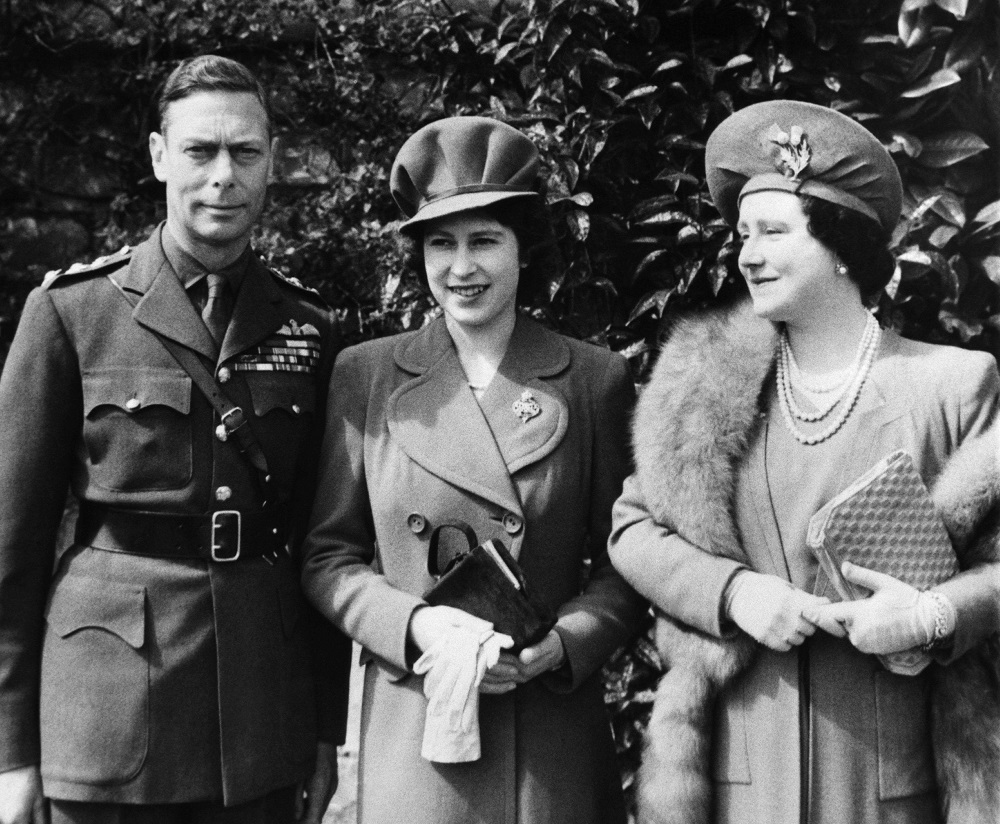
During 1944 Princess Elizabeth carried out her first official tours with her parents in Yorkshire, south Wales and Scotland. On her 18th birthday, she was appointed as one of the King’s counsellors of state, enabling her to carry out state business if the need arose. At her first official dinner, held for the prime ministers of the Dominions in London, she was seated between General Smuts of South Africa and Mr Mackenzie King of Canada.
The D-Day landings in June saw the turning point of the war, but Hitler’s revenge was swift. The Guards Chapel was bombed by a doodlebug, which killed or injured many service people and civilians, including friends of the royal family. Meanwhile the princess acquired her first lady-in-waiting, Lady Mary Palmer, and acted as a counsellor of state when the King visited his troops in Italy. She had the important task of receiving with the Queen an address from the House of Commons, to which they replied on behalf of the throne.
In 1945 Princess Elizabeth’s wish was fulfilled when the King allowed her to join the Auxiliary Territorial Service (ATS), making her the first female in the royal family to become a serving member of the armed forces in wartime. She completed her driving course in April and passed out as a fully qualified driver (Gazette issue 37205). Two weeks later came news of the death of Mussolini, followed shortly after by that of Hitler. The war in Europe was over. On VE Day, 8 May, the princesses were delighted when the King allowed them to join the joyful crowds, and again on VJ Day in August. Armistice Day in November was particularly poignant that year. Wearing an ATS uniform, Princess Elizabeth laid a wreath at the Cenotaph for her generation.
Life during peacetime
As Britain adjusted to peacetime, Princess Elizabeth settled into a new routine at Buckingham Palace. Instead of lessons, she arranged her engagements and worked on her correspondence. In March 1946 she undertook a major solo engagement when she launched a new aircraft carrier, HMS Eagle, in Belfast, followed by a tour of Northern Ireland. In Sunderland she launched the tanker British Princess. The value of the princess’s visits to war-scarred cities in those grim years of post-war Britain was immeasurable.
Prince Philip now had an onshore job and during 1946 he and Princess Elizabeth began courting. He was invited to Balmoral, where they became informally engaged, but as she was under 25 she had to seek the King’s consent. He asked them to wait before making any announcement until after their South African tour the following year, when Elizabeth would be 21.
For Princess Elizabeth, 1947 was very significant, publicly and personally. On 1 February, during one of the most severe winters Britain had ever experienced, the royal family set sail for the Union of South Africa at the invitation of General Smuts. Their arrival in Cape Town marked the first time a reigning British monarch had set foot on South African soil. For the princess it was her first visit, outside the British Isles, to a Commonwealth country whose sovereign she would one day be. Travelling by train, car and air, the royal family covered thousands of miles in nine weeks and arrived back in Cape Town in time for Elizabeth’s 21st birthday, which was declared a public holiday in South Africa. The King appointed her colonel-in-chief of the Argyll and Sutherland Highlanders and of the 16th/5th Lancers.
At a birthday parade attended by General Smuts and his cabinet, Princess Elizabeth reviewed more than 7000 troops, and at a youth rally, 10,000 voices sang ‘Happy Birthday to You.’ Her speech that night would be considered the most moving she had ever made. From Government House she spoke to the millions of her future subjects across the world, asking to be heard as the representative of her generation. She ended with a ‘solemn act of dedication’, in which she vowed to devote her whole life to their service and asked for their support. The speech affirmed the British monarchy as the stable link between the diverse nations of the Commonwealth, while the earnest nature of the princess’s vow had a powerful unifying effect.
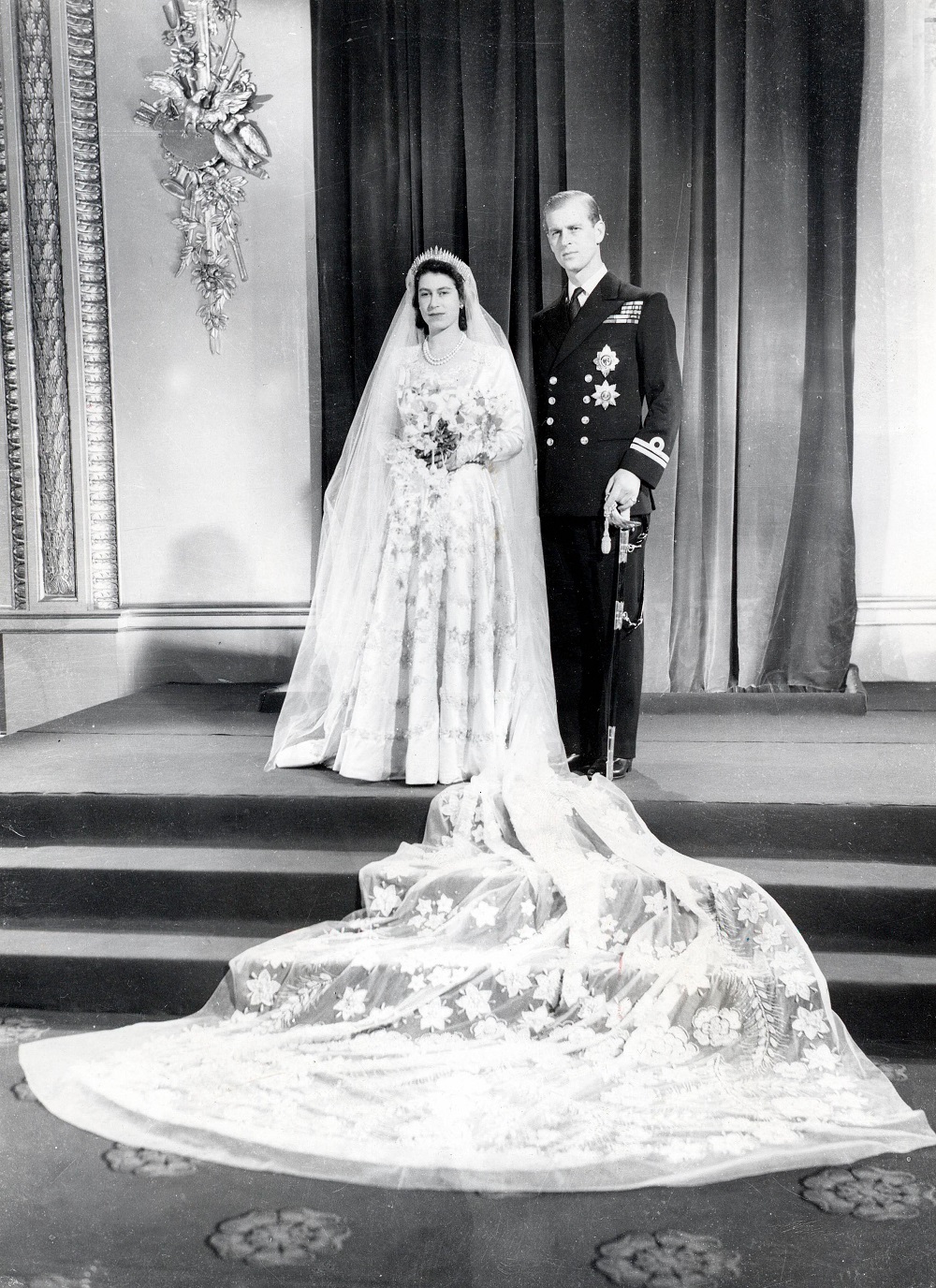
Marriage to Prince Philip, Duke of Edinburgh
Back in Britain, honours were heaped upon her but the most momentous event for Elizabeth was announced on 9 July 1947: her engagement to Lieutenant Philip Mountbatten RN who, after renouncing his place in the Greek and Danish royal families, had been granted naturalisation as a British subject (Gazette issue 37908). The wedding day was announced as 20 November, for which the King granted schoolchildren the day off. In austerity Britain, where rationing was still in force, the prospect of the princess’s wedding was a ray of sunshine.
The King bestowed on Philip the Order of the Garter and created him a royal highness. His titles would be Baron Greenwich, Earl of Merioneth and Duke of Edinburgh (Gazette issue 38128). In Westminster Abbey, 2000 people watched as Princess Elizabeth walked down the aisle on her father’s arm in a silk dress designed by Norman Hartnell with a 13-foot train, all encrusted with pearls and crystals. Her sister Princess Margaret and cousin Princess Alexandra were among the eight bridesmaids; the pageboys were Prince William of Gloucester and Prince Michael of Kent. Philip’s best man was his cousin David, Marquess of Milford Haven. The Archbishop of Canterbury conducted the service and the Archbishop of York addressed them after they had made their vows. After a wedding breakfast at Buckingham Palace, the couple left for their honeymoon, spending the first week at Broadlands in Hampshire, lent to them by the Mountbattens, and then at Birkhall.
Married life began with setbacks. Their plan to move into Sunninghill Park, near Ascot, was thwarted when it was gutted by fire. Their London home was to be Clarence House but it needed work after being bombed. In January 1948 they moved into an apartment in Kensington Palace, borrowed temporarily from the Earl and Countess of Athlone, after whose return the newly-weds had to move into Buckingham Palace. Philip began a six-month staff course at the Royal Naval College, Greenwich, and they mostly saw each other only at weekends, which they spent at Windlesham Moor, a modern country house near Windsor.
In May 1948, the couple made their first joint visit abroad, to France, where Princess Elizabeth opened the Exhibition of British Life. From President Auriol she received the Grand Cross of the Legion of Honour, and Philip was awarded the Croix de Guerre with Palm; together they laid a wreath at the grave of the Unknown Soldier. The visit sought to restore Anglo-French relations after some difficult years, and was significant because the princess was representing the peoples of the Commonwealth in a non-Commonwealth country. Visiting Wales after their return, she received the Freedom of the City of Cardiff.
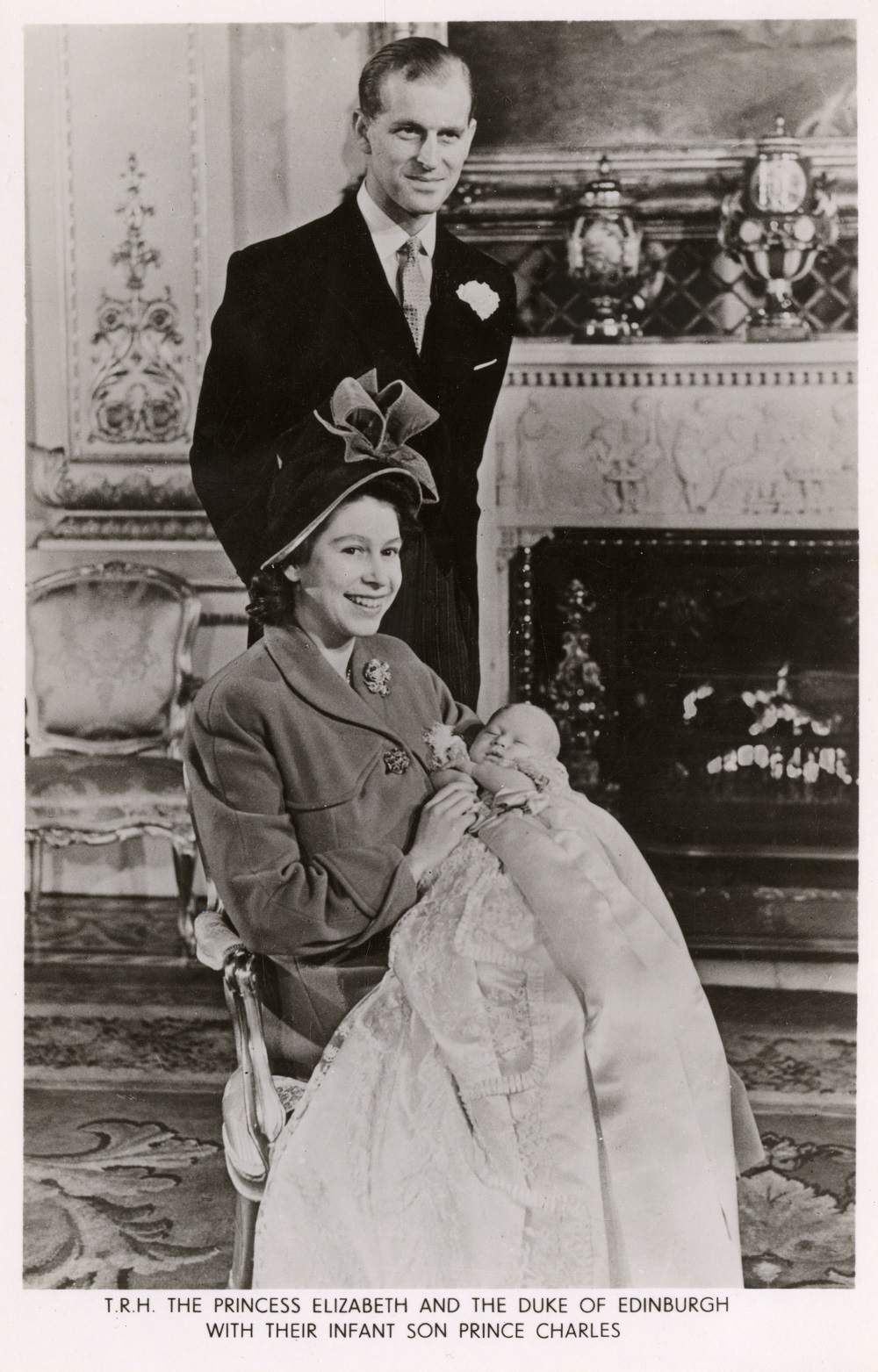 The birth of Charles and the demise of George VI
The birth of Charles and the demise of George VI
The birth of Charles Philip Arthur George on 14 November 1948 at Buckingham Palace (Gazette issue 38455) was a joyous event, and notable for being the first royal birth at which no home secretary was present; the King had abolished the requirement since he had been advised that it was a custom only, without statutory authority. During his daughter’s pregnancy, the King had insisted that his deteriorating health be kept from her. Fortunately, the King’s treatment for arteriosclerosis meant he was able to attend his grandson’s christening on 15 December. His doctors thought he should be able to carry out a planned Commonwealth tour but for practical reasons it was rescheduled to 1952.
In March 1949 an operation on both legs enabled the King to carry out limited duties. Princess Elizabeth and the Duke of Edinburgh continued their joint visits around Britain; the duke received the Freedom of the City of Edinburgh and both received the Freedom of the City of Belfast. At last on 4 July they were able to move into their London home, Clarence House. Three months later, the King approved Philip’s acceptance of the appointment as second-in-command of HMS Chequers, based in Malta. After celebrating Prince Charles’s first birthday, the princess flew out to join Philip for their wedding anniversary. In Malta the couple were generally left alone. For the princess, it was a time of great happiness, when she felt she could lead a normal life simply as the wife of a naval officer. During her second pregnancy in 1950, she made further visits to Malta, where in July Philip was promoted to his first command, HMS Magpie (Gazette issue 39597). He returned to England in time for the birth of Princess Anne on 15 August at Clarence House (Gazette issue 38995).
The King’s health deteriorated again after opening the Festival of Britain in May 1951, and the princess increasingly served as his substitute, including at the Trooping of the Colour. To support her, Philip came home from Malta on indefinite leave. In September the King was diagnosed with lung cancer and immediate steps were taken to ensure that the constitutional functions of the monarchy could continue. To this end, the princess was designated as one of five counsellors of state.
After an operation to remove the tumour, by mid-October the King seemed to be better, although it was announced that Princess Elizabeth and the duke would carry out the Commonwealth tour in his place in 1952. Meanwhile Princess Elizabeth and the duke carried out a tour of Canada, with a brief visit to Washington. They arrived back in Britain on 17 November where, following a General Election, the Conservatives were returned to power after a term under a Labour government. Churchill was once more prime minister.
The King felt well enough to resume his constitutional duties and, pleased at the success of their tour, he appointed the princess and the duke as members of the Privy Council. When he developed a cough, a second operation followed which seemed to be successful. On 14 December he celebrated his birthday and went to Sandringham for Christmas.
As 1952 began, the King looked forward to a visit to South Africa in March to celebrate the end of his convalescence. On 30 January, the evening before their six-month Commonwealth tour began, Elizabeth and Philip, with the King, Queen and Princess Margaret, spent an enjoyable evening at the Theatre Royal, Drury Lane, watching the musical South Pacific.
The next morning the King, Queen and Princess Margaret waved the couple off from London Airport. They arrived at Nairobi on 1 February to begin the first stage of their journey and went on to Sagana Hunting Lodge in the foothills of Mt Kenya. The highlight was a night spent at Treetops, an observation lodge high up in a tree, where they watched wild animals gathering at a watering hole. The next day, 6 February, they returned to Sagana Lodge, where the princess received the devastating news that her father had died. Preparations were made immediately for the new queen to leave Entebbe, Uganda, by air. Meanwhile, at St James’s Palace that afternoon, an accession council proclaimed the new monarch, making her the first since George I to be declared in absentia.
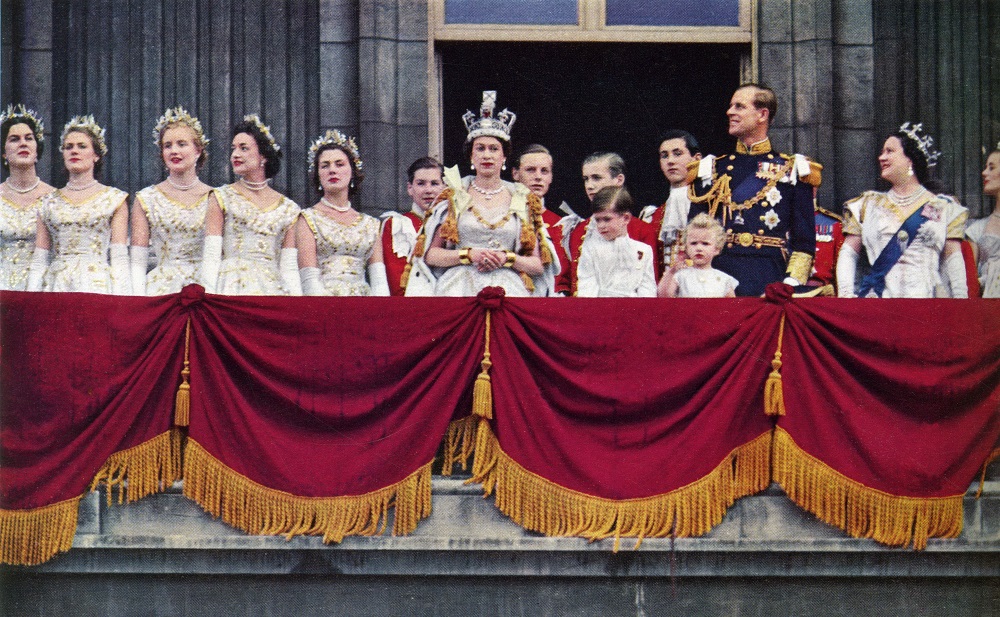
The coronation of Elizabeth II
The royal party landed in London on 7 February, where Churchill was among the public figures who greeted their queen. Later her grandmother, Queen Mary, paid obeisance to the sixth monarch of her lifetime. Her mother, widowed at just 51, became known as Queen Elizabeth the Queen Mother.
The public proclamation declared her to be ‘Queen Elizabeth the Second, by the Grace of God Queen of this Realm and of all Her other Realms and Territories, Head of the Commonwealth, Defender of the Faith’. Changes during her father’s reign saw the term ‘Commonwealth’ replace ‘British Dominions’, while ‘Emperor of India’ was omitted from the title for the first time since Queen Victoria was declared its empress.
The Queen did not want her father’s funeral on 15 February to be a day of public mourning, only that there should be a two-minute silence (Gazette issue 39575). Shortly after she declared that she and her children would be styled and known as the House and Family of Windsor and that her descendants, other than females who married, would be called Windsor (Gazette issue 39513). In 1960 it was declared that the name Mountbatten-Windsor would apply to her descendants, other than those who were styled as royal highness and had the title of prince/princess, or female descendants who married (Gazette issue 41948).
Elizabeth II was crowned at Westminster Abbey on 2 June 1953 (Gazette issue 40020). Supported unwaveringly by HRH the Duke of Edinburgh, whom she made a prince in 1957, she faithfully served her people for longer than anyone could have imagined.
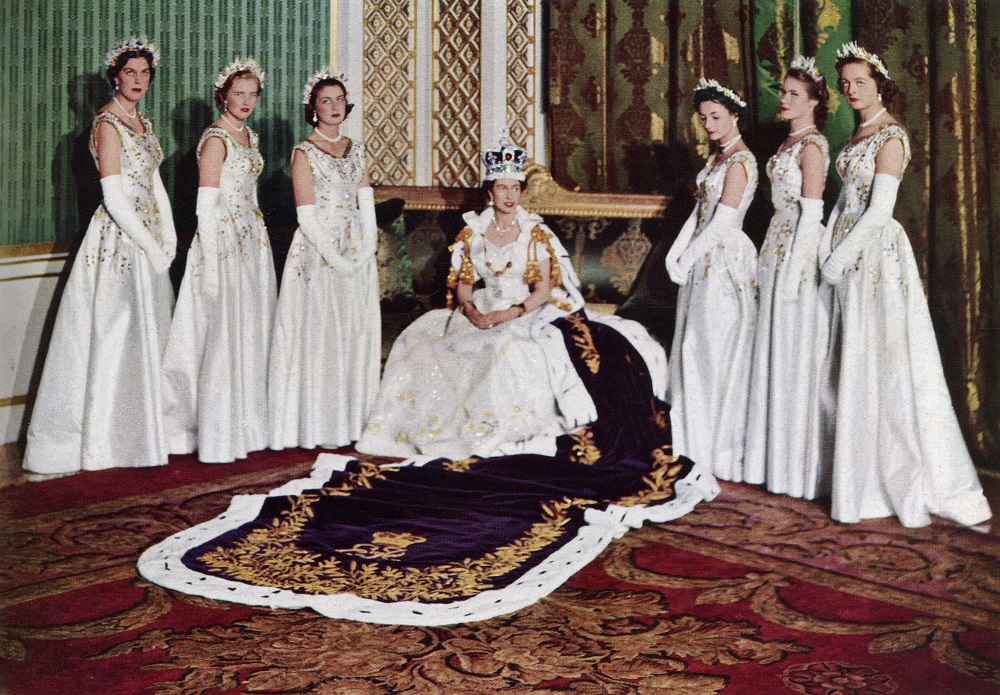
About the author
Jane Dismore is a biographer, a freelance writer of history and heritage, and a Fellow of the Royal Historical Society. Her books include Princess: The Early Life of Queen Elizabeth II.
Images (in order of appearance):
Mary Evans Picture Library
© Illustrated London News Ltd/Mary Evans
Mary Evans Picture Library
Mary Evans Picture Library
AF archive / Alamy Stock Photo
Classic Image / Alamy Stock Photo
Everett Collection Inc / Alamy Stock Photo
Keystone Press / Alamy Stock Photo
Mary Evans / Grenville Collins Postcard Collection
© Illustrated London News Ltd/Mary Evans
© Illustrated London News Ltd/Mary Evans
